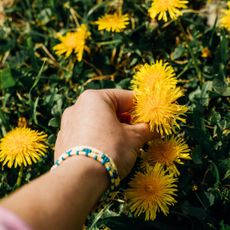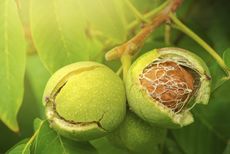Is Growing Butternuts Possible: Information About White Walnut Trees


What are butternuts? No, don’t think squash, think trees. Butternut (Juglans cinerea) is a species of walnut tree that is native to the eastern United States and Canada. And the nuts that grow on these wild trees are easy to process and delicious to eat. Read on for more butternut tree information.
Butternut Tree Information
If you tell someone you are growing butternuts from butternut trees, they are likely to respond: “What are butternuts?” Many gardeners are not familiar with the wild nut tree and have never tasted a butternut. Butternut trees are also called white walnut trees because they have pale gray bark and are related to the black walnut tree (Juglans nigra) and other members of the walnut family. White walnut trees grow to 60 feet (18.3 m.) tall in the wild, with dark green leaves arranged in leaflets up to 20 inches (50.8 cm.) long.
Are Butternuts Edible?
When you are learning butternut tree information, the nuts themselves are of top interest. The fruit of the butternut tree is a nut. It is not round like the nut of the black walnut tree, but elongated, longer than it is wide. The nut is deeply ridged and grows inside a green, hairy husk until they mature in mid-autumn. Squirrels and other wildlife love butternuts. Are butternuts edible by humans? They most certainly are, and have been eaten by Native Americans for centuries. Butternut trees, or white walnut trees, produce rich and delicious nuts. The butternut is an oily nut that can be eaten as is when mature or prepared in a variety of ways. The Iroquis crushed and boiled butternuts and served the mixture as baby food or drinks, or processed it into breads, puddings, and sauces.
Growing Butternuts
It is entirely possible to start growing butternuts in your backyard, if you have a site with rich, loamy soil. The trees are vigorous and live for some 75 years. However, the butternut tree is now a threatened species due to its susceptibility to a fungal canker disease, Sirococcus clavigignenti-jug-landacearum, also called “butter-nut canker.” Its populations in the wild have diminished and in many places it is rare. Hybrids, where white walnut trees are crossed with Japanese walnut, are more resistant to the canker.
Gardening tips, videos, info and more delivered right to your inbox!
Sign up for the Gardening Know How newsletter today and receive a free download of our DIY eBook "Bring Your Garden Indoors: 13 DIY Projects For Fall And Winter".

Teo Spengler has been gardening for 30 years. She is a docent at the San Francisco Botanical Garden. Her passion is trees, 250 of which she has planted on her land in France.
-
 Foraging Flowers: How To Forage Floral Plants – And Which Flowers You Can Pick For Free Edibles!
Foraging Flowers: How To Forage Floral Plants – And Which Flowers You Can Pick For Free Edibles!It’s fun to forage flowers, but it’s important to know the rules. Avoid areas that have been sprayed, beware of imposters and take only what you need.
By Tonya Barnett
-
 9 Contemporary Small Garden Ideas – Maximize Style With A Modern Design
9 Contemporary Small Garden Ideas – Maximize Style With A Modern DesignSome simple conceptual ideas can transform even the tiniest plot from humdrum to dream design. Try these 9 contemporary small garden ideas to modernize your plot
By Amy Grant
-
 Butternut Harvesting: How To Harvest Butternut Trees
Butternut Harvesting: How To Harvest Butternut TreesAn underutilized nut, the butternut, is a hard nut that is as large as a pecan. If you are lucky enough to have one of these gorgeous white walnut trees, you may be wondering when and how to harvest butternut trees? This article can help with that.
By Amy Grant
-
 Canker In Butternut Trees: Learn How To Treat Butternut Canker
Canker In Butternut Trees: Learn How To Treat Butternut CankerButternut trees are treasures that add grace and beauty to the landscape, but butternut canker disease ruins the appearance of the tree, and it is almost always fatal. Find out about preventing and treating butternut canker in this article.
By Jackie Carroll
-
 Fusarium Canker In Walnuts – Learn About Treating Fusarium Canker Disease on Walnut Trees
Fusarium Canker In Walnuts – Learn About Treating Fusarium Canker Disease on Walnut TreesWalnut trees grow quickly, and before you know it, you have cool shade and a bounty of nuts. You may also have cankers that can kill the tree. Find out about fusarium canker in walnuts in this article. Click here to learn more.
By Jackie Carroll
-
Treating Walnut Bunch Disease: Bunch Disease In Walnut Trees
Walnut bunch disease affects not only walnuts but a number of other trees, including pecan and hickory. Find helpful information regarding symptoms of bunch disease and bunch disease treatment in the article that follows.
By Mary H. Dyer
-
 Trimming A Walnut Tree: How To Prune Walnut Trees Properly
Trimming A Walnut Tree: How To Prune Walnut Trees ProperlyWalnut tree pruning is important for the tree's health, structure and productivity. Walnut trees make nice shade trees, are excellent timber specimens, and produce delicious nuts. Click this article to learn how to prune a walnut tree.
By Karen Boness
-
 Walnut Tree Harvesting: When Are Walnuts Ready To Pick
Walnut Tree Harvesting: When Are Walnuts Ready To PickWalnuts are high in protein and delicious! What better reason to grow your own? The question is, when are walnuts ready to pick and what is the best way to pick walnuts? This article will help with harvesting walnuts.
By Amy Grant
-
 Planting Walnut Trees: Tips and Information On Growing Walnuts
Planting Walnut Trees: Tips and Information On Growing WalnutsWalnut trees produce not only a delicious, nutritious nut but also provide shade in the landscape with their large, arching limbs. Learn how to grow walnuts in this article.
By Amy Grant